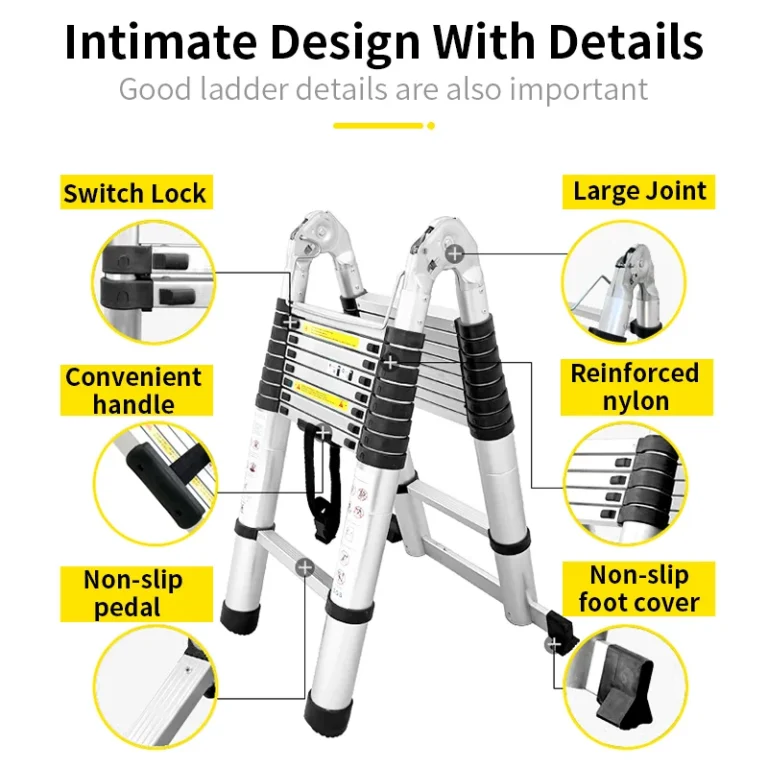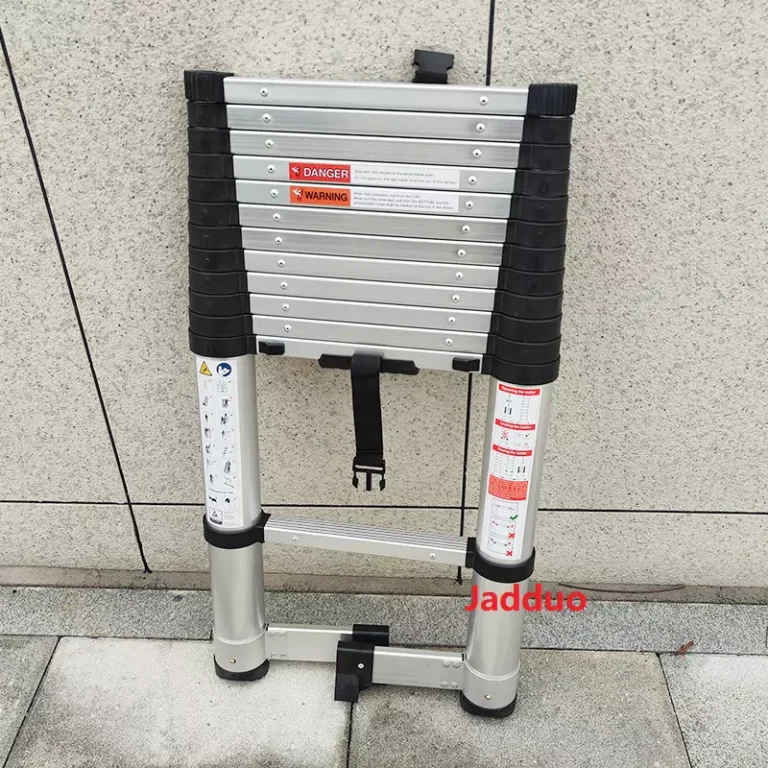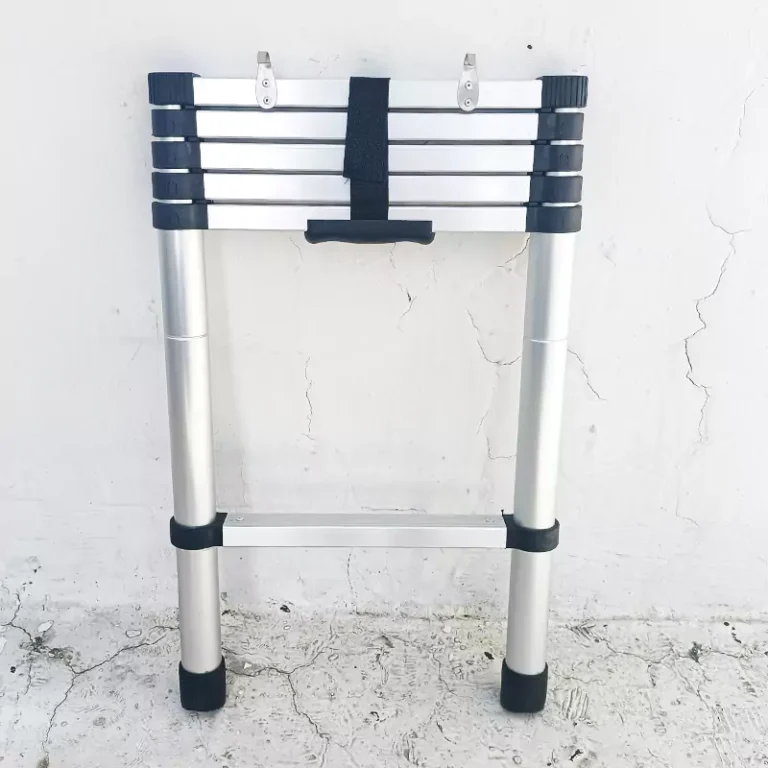Working up high needs the right ladder to make things safe and easy. Telescopic and extension ladders each have their own cool stuff—like being easy to carry for quick jobs or super tall and strong for big projects. Telescoping ladders are awesome for saving space and changing heights fast. Extension ladders give you mega reach and tough support for heavy work. This guide breaks down what makes them different, how to stay safe, and where they work best. Plus, we’ll check out top picks from JADDUO, a big name in ladder making. By knowing what each ladder does best, you can pick the perfect one for your job and use it safely for years.
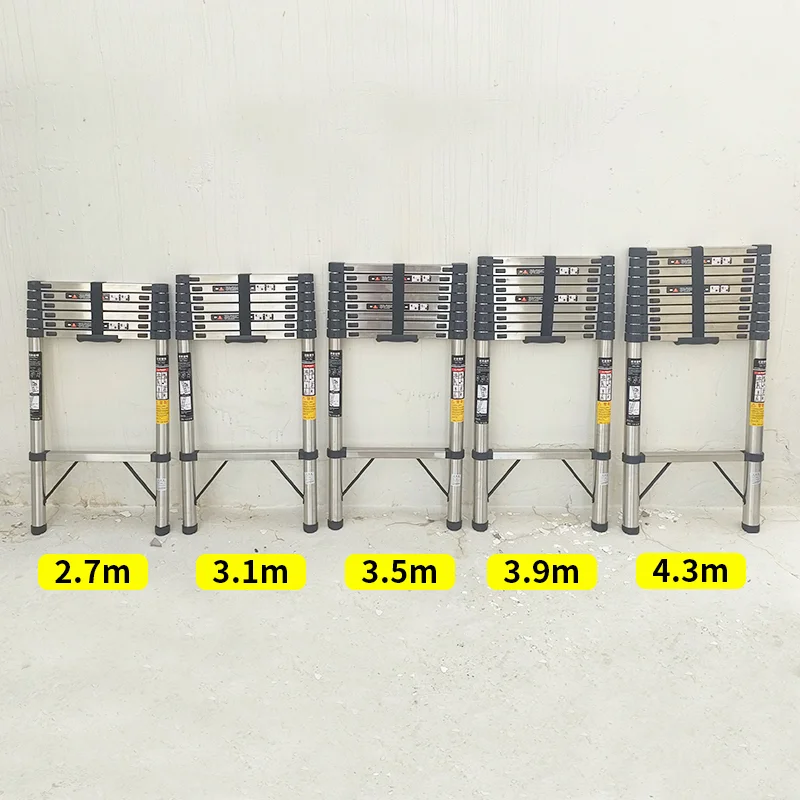
What Makes Telescoping Ladders Unique?
Key Features of Telescoping Ladders
Telescoping ladders are built to fold up small so you can store or carry them easy. They’re usually made from light stuff like aluminum alloy, which keeps them strong but not heavy. Neat locks hold each part tight, so the ladder won’t shrink back while you’re climbing. Some even have wide, grippy steps that spread out your weight to keep your feet comfy during long jobs.
Advantages of Using Telescoping Ladders
The best thing about telescoping ladders is how they save space. You can stick one in a car trunk or a closet, perfect for workers on the go or folks with tiny storage spots. They’re super light, so you don’t get tired hauling them around. Plus, they’re flexible—you can set them to different heights for all kinds of tasks, like fixing stuff inside or outside your house.
Limitations of Telescoping Ladders
Telescoping ladders are handy but have some downsides. You gotta handle them careful to keep the locks from breaking. Also, they might not be tough enough for super heavy factory jobs since they can’t hold as much weight as extension ladders. Keeping them clean and checked is super important to make them last and stay safe.
JADDUO Telescoping Ladder Models and Their Applications
If you want a trusty telescopic ladder, JADDUO has awesome ones for home or work needs. Their ladders use light aluminum and have cool safety stuff like grippy steps and strong locks. Whether you’re cleaning gutters or wiring lights, JADDUO’s ladders are flexible and safe for the job.
Why Choose an Extension Ladder?
Core Characteristics of Extension Ladders
Extension ladders are made to stretch tall for outside building or fixing work. They have two or more parts that slide past each other to reach way up high. Built from stuff like aluminum alloy or fiberglass, they’re tough enough to hold heavy loads and last a long time.
Benefits of Extension Ladders for Professional Use
Extension ladders are great for big jobs because they’re super strong and can hold lots of weight. They’re perfect for stuff like painting tall buildings or putting on roofs. Their overlapping parts spread weight evenly, so they stay steady while you work.
Potential Drawbacks of Extension Ladders
Extension ladders can be a pain to move or store because they’re so big. Setting them up wrong can cause falls, so you gotta get the angle just right—about 75 degrees. They’re not great for tight spots where you need to wiggle around.
Recommended JADDUO Extension Ladder Products
For tough jobs, check out JADDUO’s extension ladders. They’re made with thick aluminum alloy to hold heavy stuff and meet strict EN131 safety rules. Plus, they have grippy feet to stay put on all kinds of ground.
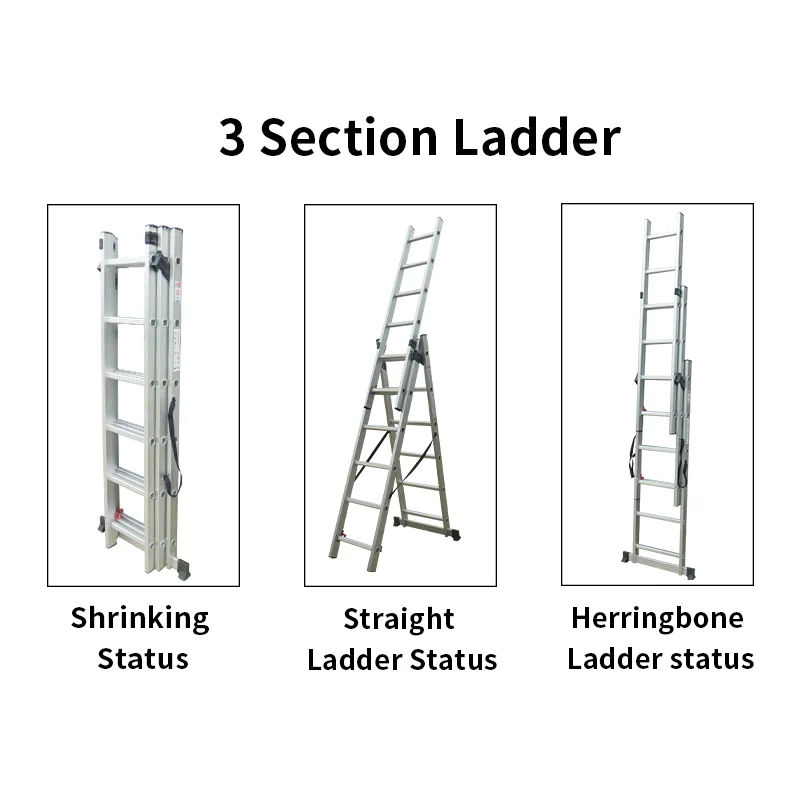
Comparing Telescoping and Extension Ladders
Differences in Design and Functionality
Telescoping ladders are all about being small and handy. They fold up tiny, great for folks who move a lot or have little space. Extension ladders are about reaching super high and staying strong, perfect for big outdoor jobs that need lots of height.
Safety Considerations for Each Ladder Type
Both ladders need you to follow safety rules. For telescopic ones, check the locks often to stop them from folding up while you’re on them. Extension ladders need to sit on flat ground at a 75-degree angle to avoid slipping or tipping. Over half of ladder accidents happen from using them wrong. Always read the maker’s tips and check your ladder before climbing.
Versatility and Storage Requirements
Telescoping ladders are super flexible—they change heights easy and fit in small spots when you’re done. But if you’re always climbing way up or carrying heavy stuff, an extension ladder’s toughness is better, even if it takes more room to store.
Choosing the Right Ladder for Your Needs
How Can You Evaluate Your Specific Use Cases?
Picking the right ladder starts with thinking about your jobs. Are you doing house chores, building stuff outside, or working in a factory? For tasks needing different heights, like painting or trimming trees, a telescopic ladder’s small size and easy carry are great. They fold up small for storage and moving around. For jobs needing super tall reach and heavy lifting, like fixing tall buildings, an extension ladder is a must.
What Factors Should You Consider: Height, Weight, and Portability?
Height matters a lot. Extension ladders can go way up, awesome for outside fixes or multi-story work. But they’re big and bulky to store. Telescopic ladders adjust to lots of heights and pack down small. They’re light, so you don’t get worn out carrying them.
Weight limits are key too. Extension ladders hold more weight because they’re built super tough with stuff like aluminum or fiberglass. Telescopic ladders are better for lighter jobs but need gentle handling to keep locks safe.
If you move between work spots a lot, portability is big. Telescopic ladders are easy to tote and fit in car trunks or closets. Extension ladders take more effort to move but are steady for big tasks.
How Do JADDUO Products Cater to Diverse Professional Needs?
JADDUO is a top name for awesome ladders for home or work. Their telescopic ladders use light aluminum with neat safety stuff like grippy steps and strong locks. For big jobs needing high reach and heavy loads, their extension ladders shine with thick aluminum and EN131 safety approval. JADDUO’s gear is built to handle all kinds of needs with trusty performance.
Maintenance and Care Tips for Telescoping and Extension Ladders
What Are the Best Practices for Longevity and Safety?
Taking care of your ladder keeps it safe and working for ages. Check it before every use—look for cracks, worn feet, or loose bolts. Make sure it’s solid by stretching it out and checking for damage. Clean off dirt from steps and oil moving parts sometimes to keep them smooth.
For telescopic ladders, keep locks clear of dirt or grease. Fold both sides evenly when you shrink it to avoid wearing out joints. Pull in side stabilizers for small storage.
Extension ladders need extra care when setting up—put them at a 75-degree angle on steady ground to stop tipping. Swap out rubber feet if they’re half worn since they’re super important for grip on slick surfaces.
How Does JADDUO Ensure Durability in Their Ladder Designs?
JADDUO makes tough ladders with careful work and strong stuff like thick aluminum alloy. Their products get strict tests to handle heavy use while meeting EN131 safety rules. Wide, grippy steps make long jobs comfier by spreading your weight. Plus, JADDUO designs their ladders to be easy to clean and check, so keeping them in shape is simple. Whether you need a telescopic ladder for flexible jobs or an extension one for big tasks, JADDUO’s products is reliable and well-made.
FAQs
Q1: How do I safely set up an extension ladder?
Put it on solid ground at a 75-degree angle (1 meter out for every 4 meters up). Make the top stick out 1 meter above your work spot for safe hand grips.
Q2: What weight can telescopic ladders hold?
Most hold up to 150kg, including tools. Always check the maker’s info before using.
Q3: How often should I check my ladder?
Look it over every time you use it—check for damage, worn parts, and tight locks to keep it safe.

